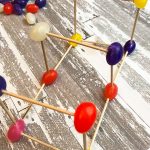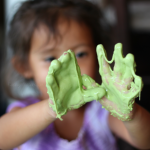Written by Janine Byler
Sweets have often been used as motivators for kids. They’re given to kids as rewards for doing something good or behaving positively. They’re great for instant gratification, and kids love them!
It sounds appealing, sure, but they may not be a good practice in the long run. Using candies as rewards, while teaching kids that excessive amounts of sweets are “bad” at the same time, can become confusing. Research even shows that kids who receive candy as rewards tend to overeat, increasing their risk of becoming overweight and getting type 2 diabetes, high blood pressure, respiratory problems, and a number of other chronic diseases.
Still, there’s no reason why candy should be villainized and banned from children’s lives for good. You can still give them to kids in moderation, and incorporate the colorful sweets into lessons instead!
In fact, colorful candy is perfect for stimulating kids’ minds and holding their attention. And as candies are everyday items involving them in lessons allows children a deeper, more practical appreciation.
Jellybean structures
 This is a classic, easy engineering activity that kids can enjoy. The activity involves an inordinate amount of jellybeans and some toothpicks. You and your students can work together to create 3-dimensional shapes and structures using these objects.
This is a classic, easy engineering activity that kids can enjoy. The activity involves an inordinate amount of jellybeans and some toothpicks. You and your students can work together to create 3-dimensional shapes and structures using these objects.
You can either provide specific jellybean “floor plans” for the kids to execute, or allow them free reign to explore and create a jellybean building completely straight out of their imaginations and own calculations.
This is a quick and hands-on introduction to design and technology for kids. This also allows them to think creatively and develop analytical math skills. However, since this activity involves toothpicks, exercise caution and keep a close eye on everyone throughout the activity.
Classroom candy shop
 Math is often considered one of the most challenging subjects at school, and some kids may even struggle with it. However, you can incorporate math lessons with the pleasurable experience of visiting a candy shop, in the classroom setting.
Math is often considered one of the most challenging subjects at school, and some kids may even struggle with it. However, you can incorporate math lessons with the pleasurable experience of visiting a candy shop, in the classroom setting.
A trip to the candy shop is something that every child enjoys. You can simulate setting up different kinds of candy shops in the classroom, from stores that sell specialty sponge candies like Fowler’s Candy Shop in New York to self-service five-and-dime shops—the sky’s the limit!
Make your candy shop come to life by using play money, setting up a play cash register, and of course, candy. Kids can take turns being shop attendant, cashier, and customer, to get the full trade and entrepreneurial experience.
Edible slime
 Creating edible slime is a fun way to integrate sensory play to your lessons. It engages creativity and planning skills in kids, and encourages them to be curious and observant as well.
Creating edible slime is a fun way to integrate sensory play to your lessons. It engages creativity and planning skills in kids, and encourages them to be curious and observant as well.
There are a number of recipes to choose from, all of them pretty simple and straightforward. One recipe requires just corn starch, milk, and flavoring—you can also mix in your kids’ favorite candies like Smarties and Gummy Bears and use them as flavoring. Following measurements from recipes also gives kids the chance to learn about ratios and proportions.
Beyond being an intellectual and scientific exercise, research shows that handling slime mirrors the effects of mindfulness practices, helping children focus their attention on the present. This is a great skill to instill in children to help them manage stressors throughout life.
This helps them discern colors and shapes, plan and build patterns, and develop creative expressions. And when done as a group activity, this can promote constructive communication and teamwork among the group.
Math has developed a reputation for being challenging and tough, but we’ve rounded up numerous methods for you to teach it in fun and engaging ways! Read on to learn more.

